

Max Davies
2025 BYD Shark 6 review
5 Days Ago
A new Kia Carnival has come to town, and attractions include a longer list of safety equipment and a punchier V6 engine.
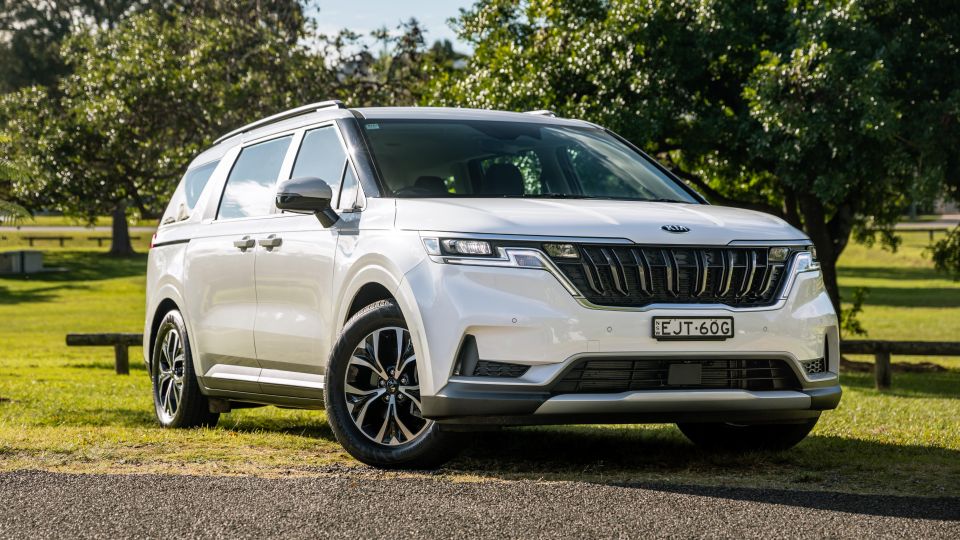
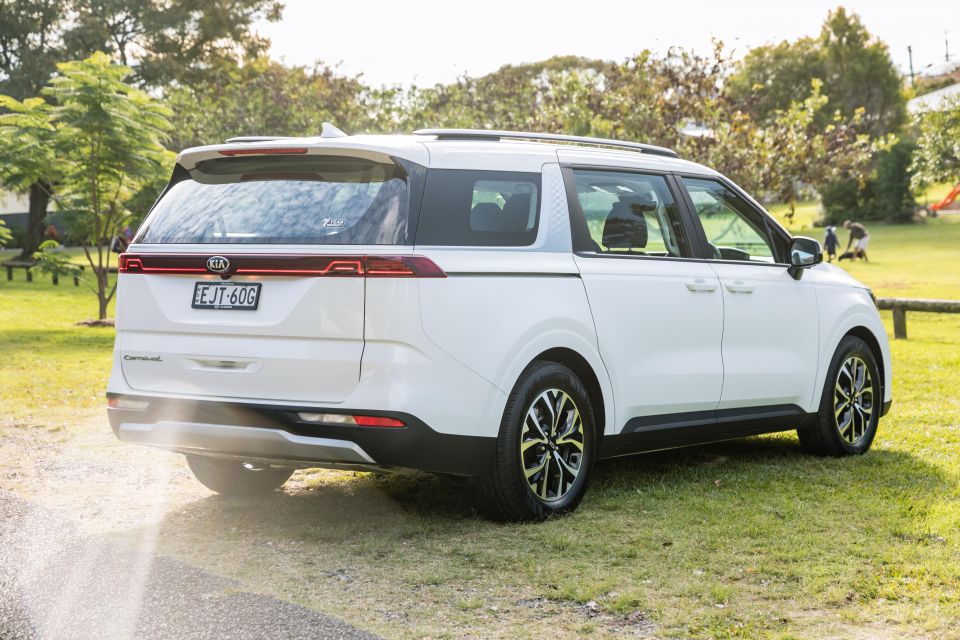

News Editor
New from
$43,190
excl. on-roads

News Editor
New from
$43,190
excl. on-roads


News Editor
New from
$43,190
excl. on-roads

News Editor
New from
$43,190
excl. on-roads
Quickly see how this car stacks up against its competition. Select any benchmark to see more details.
Where expert car reviews meet expert car buying – CarExpert gives you trusted advice, personalised service and real savings on your next new car.
Call them what you want – people movers, people carriers, minivans – these spacious, practical vehicles get a raw deal.
Perhaps in some school drop-off lines the egg-shaped Toyota Tarago was a bit of a suburban status symbol, but otherwise this segment has always been seen as painfully uncool.
It never enjoyed the dizzying heights of popularity as it did in North America and Europe, which means we missed out on various models, and most brands exited years ago. As with those markets, though, large crossovers have surged in popularity in recent years.
But not even the largest of mainstream crossovers like the Hyundai Palisade can offer what the Kia Carnival does: seating for eight adults and a large load of luggage.
For those who wouldn’t be caught dead in a people mover, Kia has given the Carnival a distinctive, less van-like look. It looks trimmer and more angular than the last car, which was already more SUV-like in appearance than its predecessor, while the longer bonnet is an even more overt nod to the SUVs that dominate buyers’ attention.

Kia isn’t even calling it a people mover, instead using the term “grand utility vehicle”.
There’s no hiding the fact this is a people mover, but it doesn’t look like a box with windows. We’re surprised Kia didn’t put some cladding on it and raise the ride height for an SUV look, something companies like Mazda and Pontiac have done before with their people movers.
The redesigned Carnival isn’t just a styling exercise. It’s moved to the new N3 platform underpinning the likes of the Kia Sorento and Hyundai Santa Fe, and rides a 30mm longer wheelbase than its predecessor at 3090mm.
It’s also 10mm wider and 40mm longer than before, at 1995mm and 5155mm overall. It packs a new V6 petrol engine, an updated turbo-diesel four-cylinder, and an even longer list of safety equipment than before.
Such is Kia’s stranglehold on this segment, the brand could have presented a much more conservative redesign and it still would have probably sat atop the sales charts here.
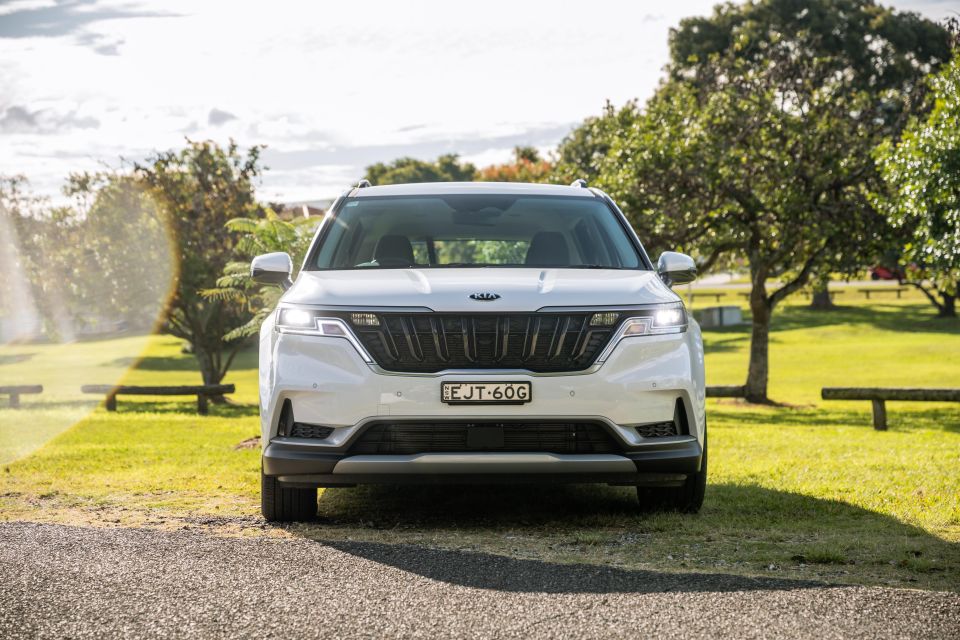
Kia offers an eight-variant Carnival range, consisting of four trim levels – S, Si, SLi and Platinum – each available with the choice of two different powertrains.
The range opens at $46,880 before on-road costs ($50,890 drive-away) for the V6-powered S, topping out at $66,680 before on-roads ($70,490 drive-away) for the Platinum diesel.
Our tester is the 2021 Kia Carnival Si V6, priced at $52,380 before on-roads or $56,290 drive-away. If you want a diesel engine, you’ll need to shell out another $2000.
Its chief competition is the Honda Odyssey Vi LX7, priced at $56,000 drive-away.
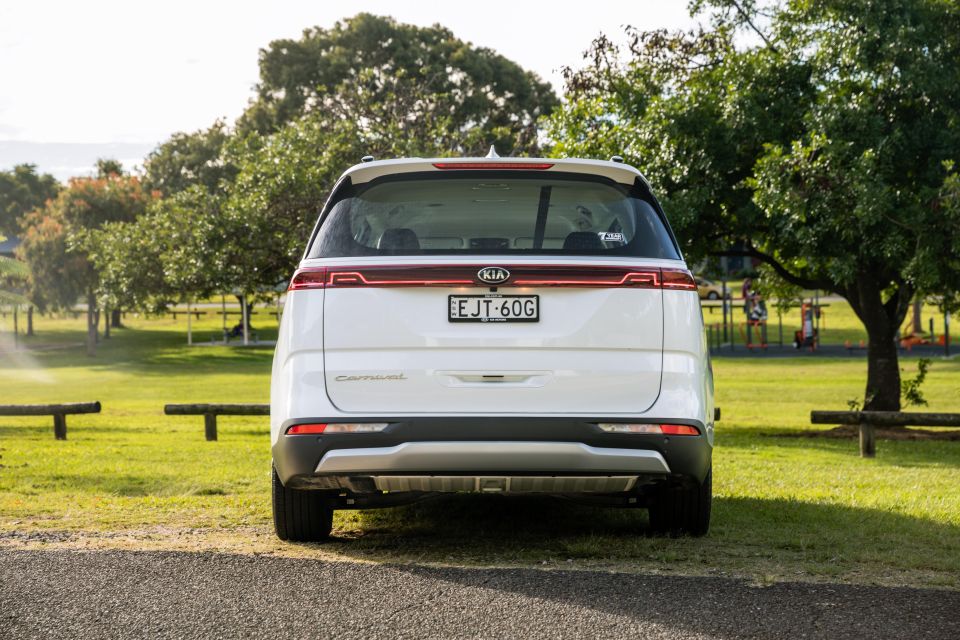
Other similarly-priced rivals include the Hyundai iMax Elite ($49,480 before on-roads) plus a couple of people movers in the Volkswagen T6.1 family: the short-wheelbase Multivan TDI340 Comfortline and the long-wheelbase Caravelle TDI340 Trendline, both priced at $58,990 before on-roads.
Anything with a Mercedes-Benz or Toyota badge is well above $60,000, while we can’t recommend the LDV G10 Executive – even at around $16,000 less – given it has only two airbags and a three-star ANCAP rating.
It’s worth noting the N3 platform will also spawn the Hyundai Staria, due here in the third quarter of 2021 and wearing styling befitting a Starfleet shuttlecraft.
It’ll replace the ancient iMax, a van-based people mover in the tradition of cars like the Ford Spectron and Toyota Spacia, though it’ll offer a van version still called the Staria Load.
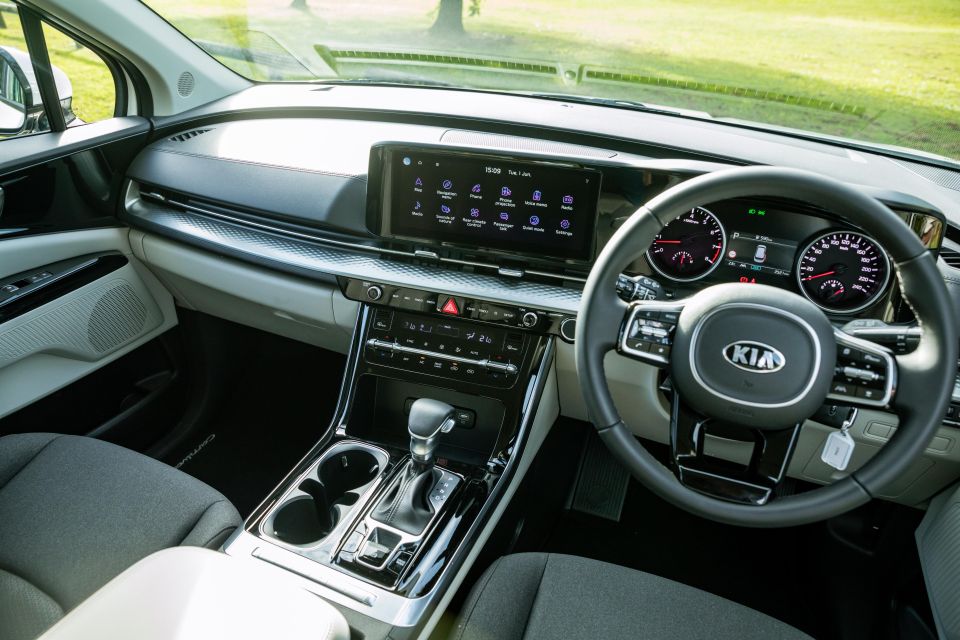
The Si V6 costs $5400 more than an S V6, but the spec sheet gets some worthy upgrades.
The standard 8.0-inch touchscreen with its tacky, thick bezel is swapped for the 12.3-inch unit that truly belongs there. Satellite navigation is added, but the wireless Android Auto and Apple CarPlay becomes wired.
The sound system adds two speakers for a total of eight, the 17-inch alloy wheels are swapped for 18-inch ones, and the rear parking sensors receive counterparts up front.
Finally, there’s dual-zone climate control and a leather-wrapped steering wheel and shifter.
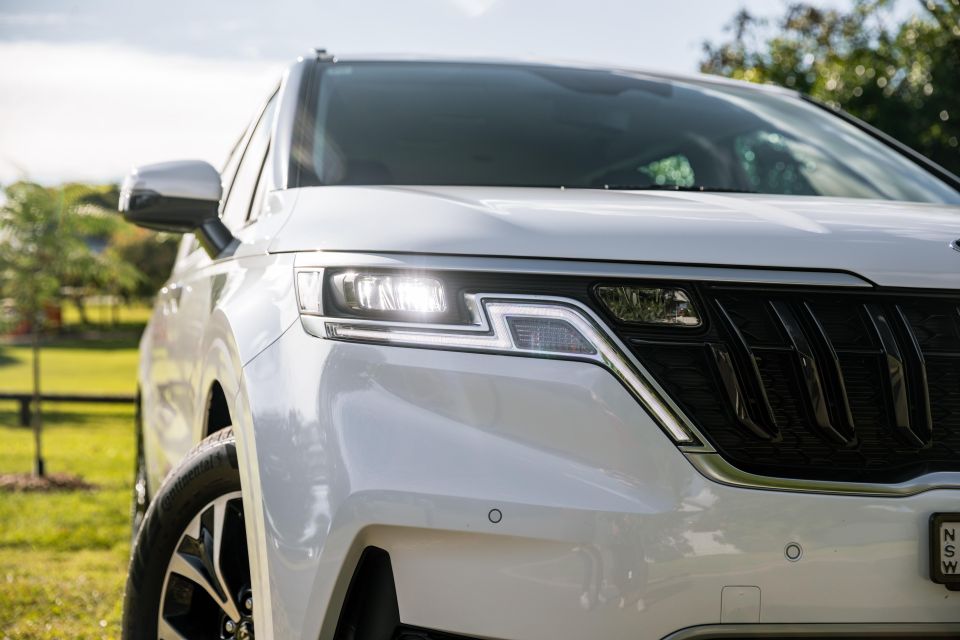
Most refreshingly, Kia is finally getting out of its bad habit of limiting LED headlights to higher grades. All 2021 Carnival models come standard with the superior lighting technology, with Si and up also featuring LED tail lights.
All Carnival models are eight seaters and feature a reversing camera, automatic headlights and automatic high-beam, but there’s no rain-sensing wipers. These will arrive later in 2021 along with other features Kia was forced to forego to get the Carnival to market in time, including a digital instrument cluster and the new Blind Spot View Monitor.
The Carnival Si misses out on features found even on the base Honda Odyssey, such as keyless entry and start, power sliding doors, leather upholstery, heated front seats and a surround-view camera.
The top-spec Odyssey Vi LX7, priced almost identically to the Carnival, adds even more kit like active cornering lights, a power tailgate and power front seats. The Kia packs a lot more punch in the performance stakes, but more on that later.
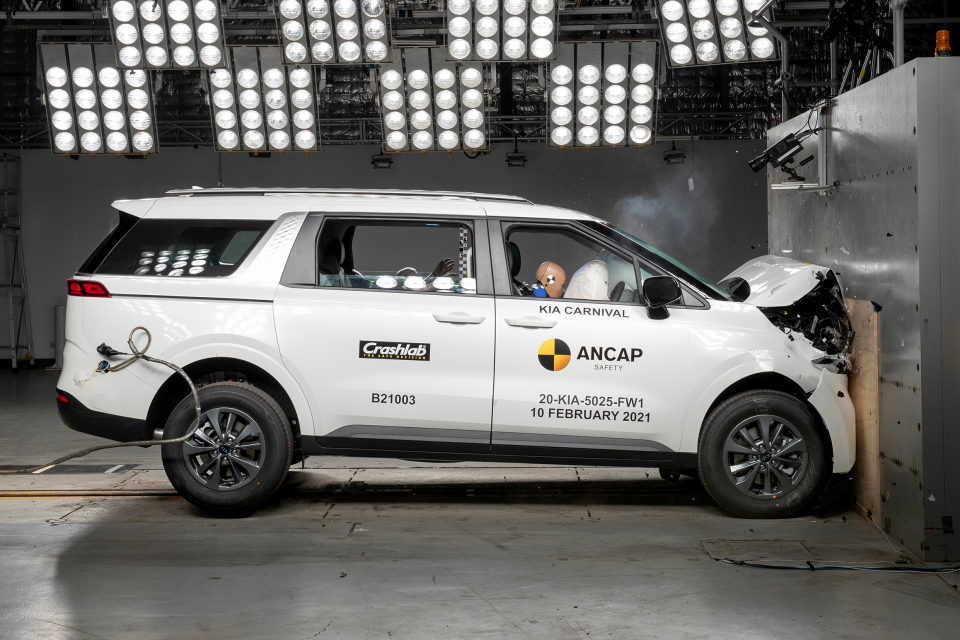
All 2021 Kia Carnival models come standard with the following safety equipment:
There are front and front-side airbags and a driver’s knee airbag, while the Carnival also boasts curtain airbags for all three rows – one more row than its Sorento sibling.
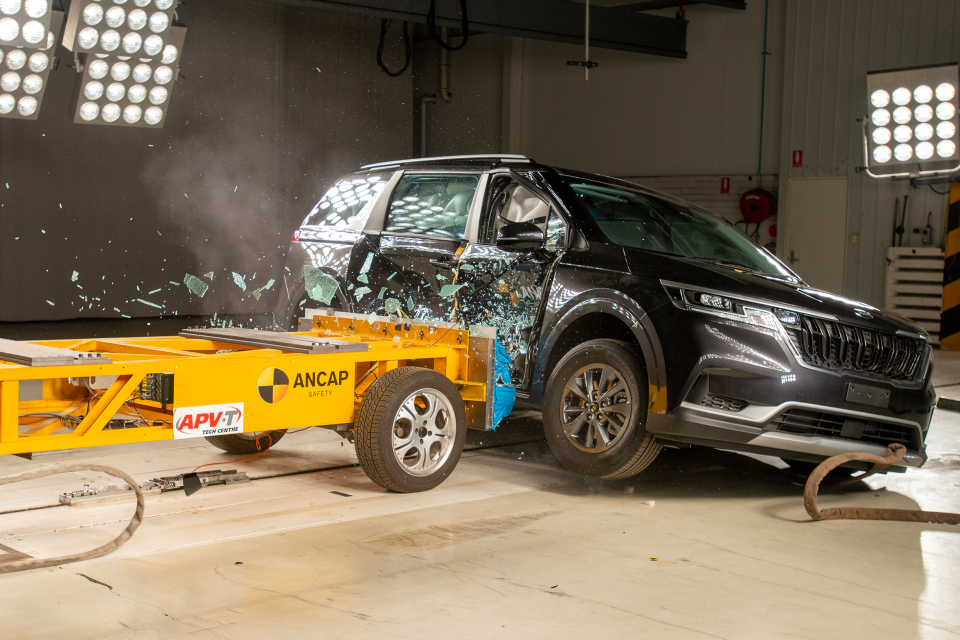
The redesigned people mover received a five-star rating from ANCAP in 2021, based on an adult occupant protection score of 90 per cent, a child occupant protection score of 88 per cent, a vulnerable road user protection score of 68 per cent and a safety assist score of 82 per cent.
The Carnival has an impressive gamut of safety equipment and, if you step up to the SLi, there’s even more on offer.
That includes rear cross-traffic assist, which brakes the car in addition to sounding a warning if it detects an imminent collision, and safe exit assist which locks the rear doors if a passenger is about to step out into the path of a vehicle.
The autonomous emergency braking works at speeds of between 10-75km/h for vehicles and 10-65km/h for pedestrians and cyclists. The junction-assist feature works at speeds of 10-30km/h when the oncoming vehicle is travelling at 30-70km/h, while the blind-spot assist works at speeds of 60-200km/h.
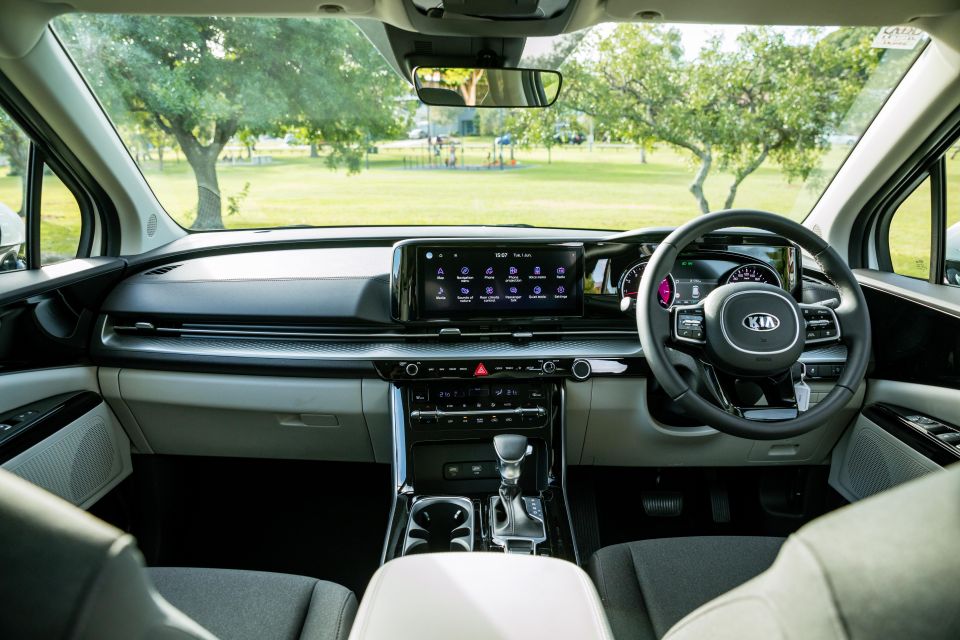
The Carnival’s interior has a clean, modern look to it.
The seats are finished in a hard-wearing, contemporary cloth upholstery that looks like it could be found on an IKEA couch, while there’s an attractive two-tone colour scheme with a dark grey used for the upper half of the dash and doors and an off-white for the lower half.
Some passengers pointed out the use of a lighter-coloured material, though, is potentially asking for trouble in a car designed to carry around grubby kids.
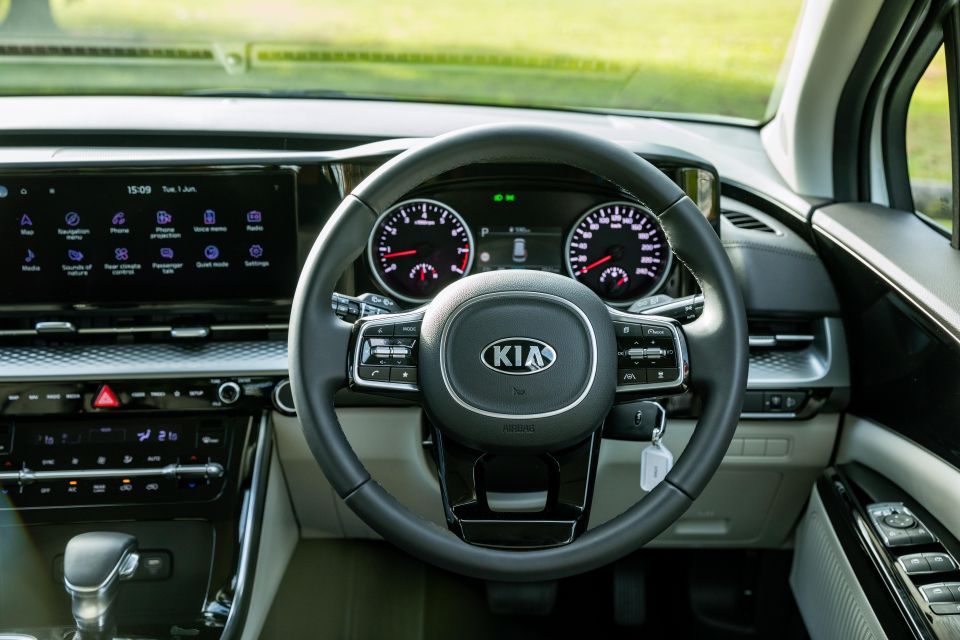
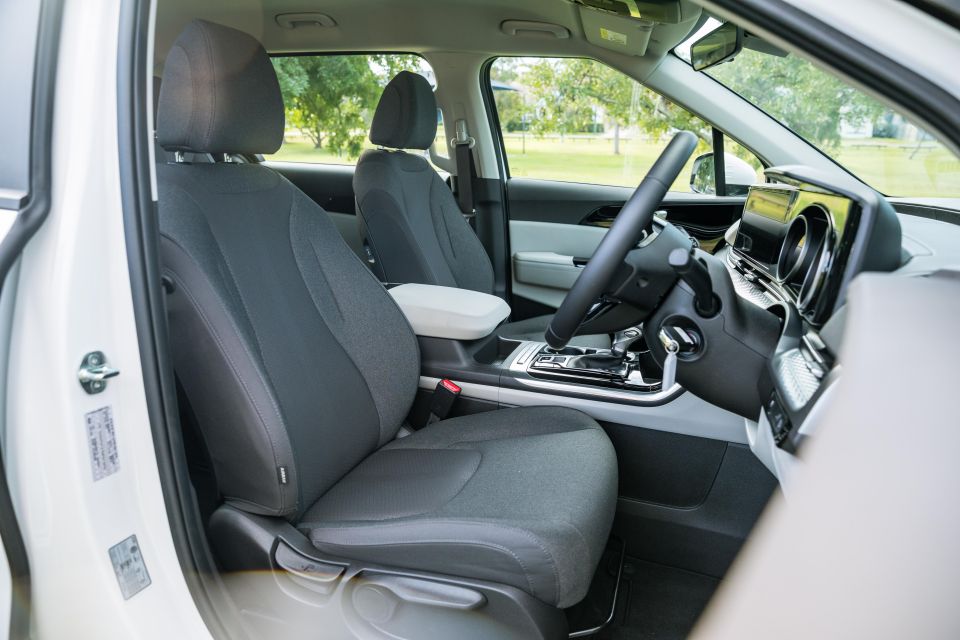
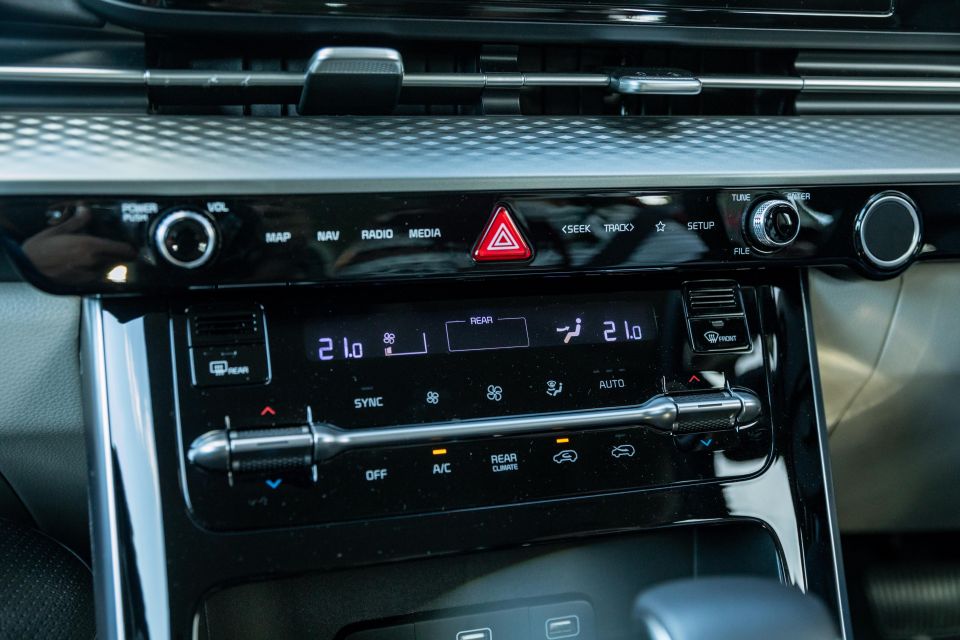

The two-tone effect adds some class to the cabin and makes it feel a little airier than a dreary black-on-black interior would. A piece of textured, metal-look trim runs along the dash, providing some further contrast and tying in with the C-pillar exterior treatment.
Kia’s (and Hyundai’s) newfound obsession with touch controls continues unabated, with most climate controls and touchscreen menu shortcuts ditching conventional buttons for these. They don’t offer any haptic feedback and they’re finished in piano black, which makes them susceptible to smudges and dust.
Before it gets all dirty, the dashboard looks lovely. That 12.3-inch touchscreen is well-sized and Kia’s user interface is attractive and easy to navigate, particularly the navigation, though sometimes the screen is a bit hard to reach.
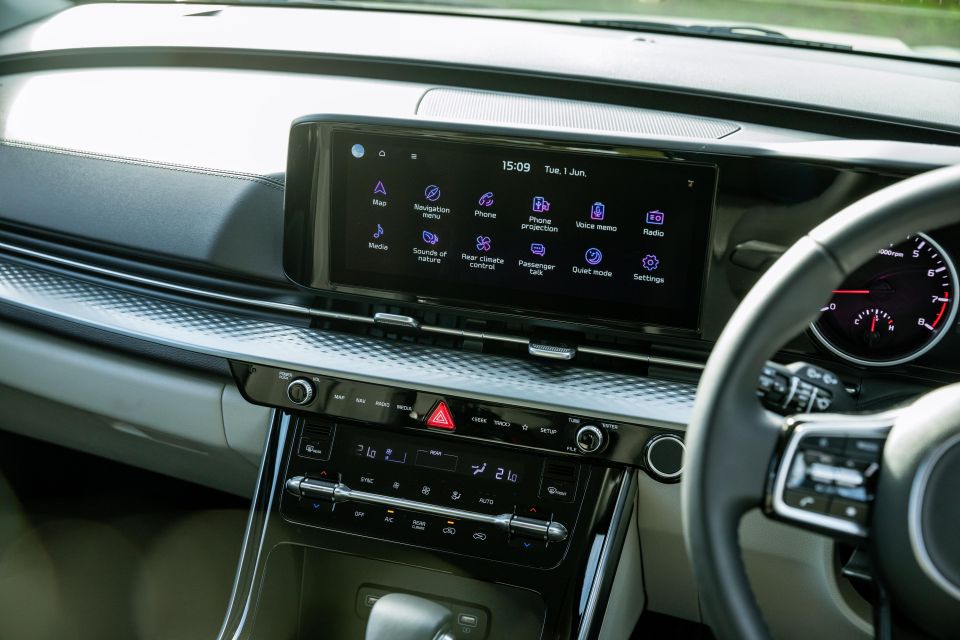
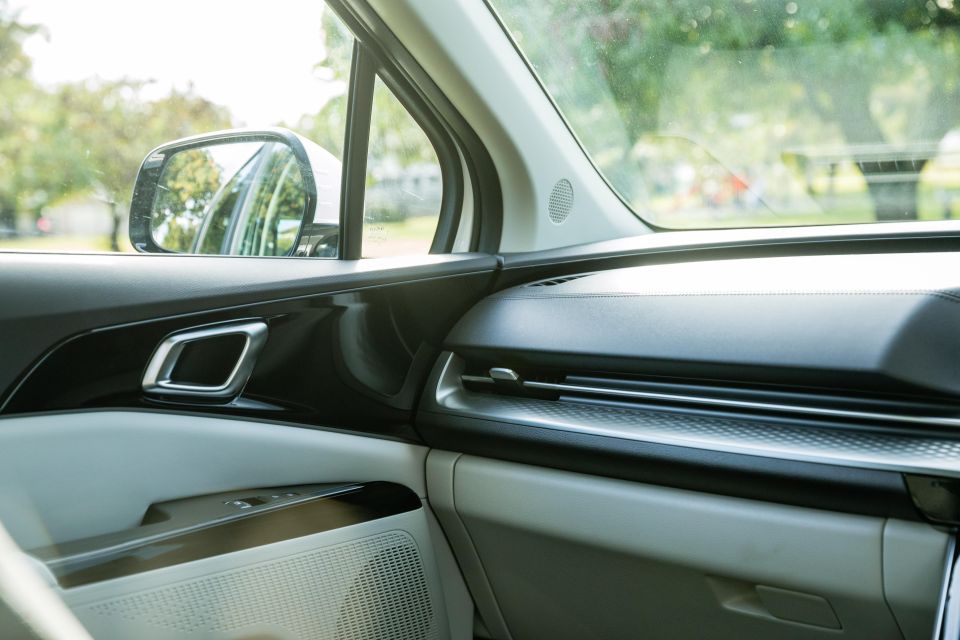
There’s no digital instrument cluster in Australia yet, but there’s a 4.2-inch colour display flanked by analogue dials. You can choose between three different themes for the screen which is good as the default one has a distracting strobing effect.
At the base of the centre stack, there are three USB outlets and a small tray. Oddment storage is mostly good up front, with a large centre console bin and cupholders. The bottle holders in the doors, however, lack sufficient clearance to fit larger bottles.
The front seats are best described as flat and functional, though they proved sufficiently comfortable and supportive on longer trips. That’s in contrast to the previous-generation model, which had my back aching on one long trip.
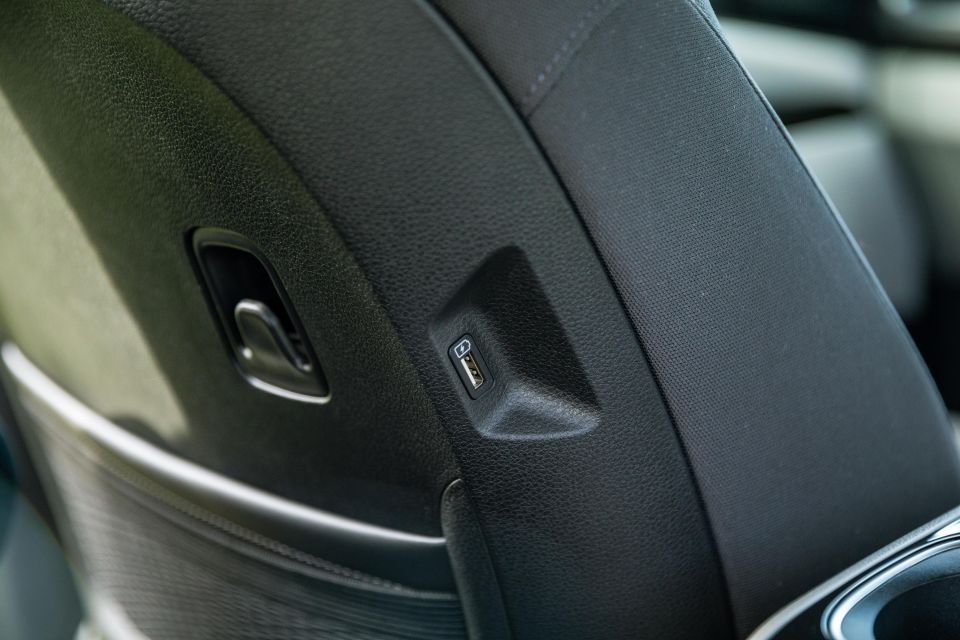

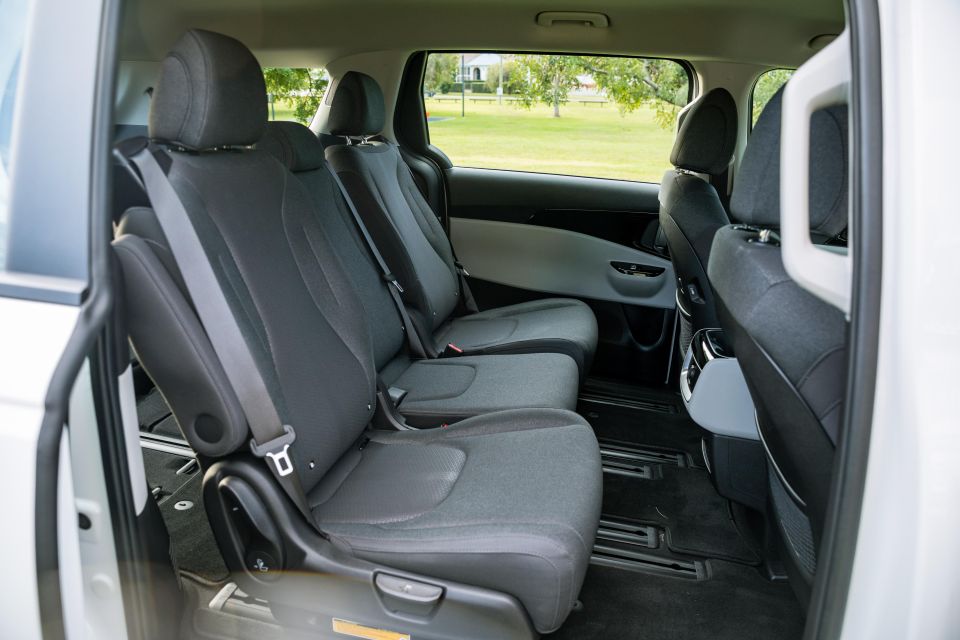
Stepping into the second row, there’s a 12V outlet and USB-A outlets on each of the front seatbacks. There are air vents for second-row occupants, with temperature and fan speed controls located on the driver’s side instead of somewhere where all occupants can reach them.
While these controls aren’t located at the back of the centre console, the console still juts out and eats away ever so slightly at the centre-seat passenger’s legroom.
You can fold down the centre seat to make a table, complete with cupholders, or remove the seat entirely to facilitate easy access to the third row. All three seats can also slide and fold independently, though the second row doesn’t fold flat into the floor.
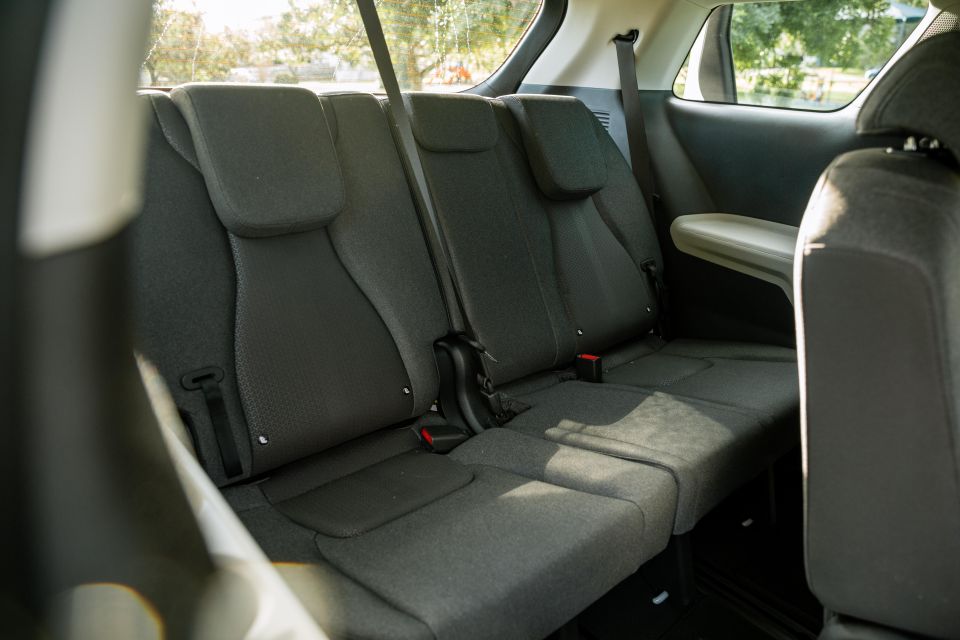
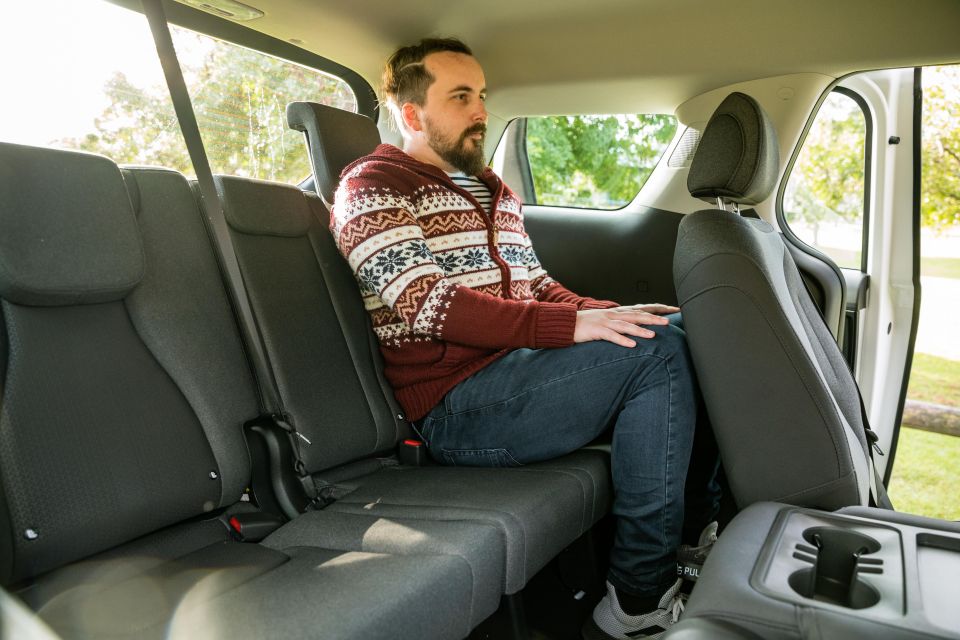
Third row occupants can access the 12V outlet in the boot, though there are no USB outlets back here unless you step up to the SLi. The second-row seatbacks are upholstered in cloth.
Unlike some SUVs, the third row of the Carnival is no less comfortable than the second row. That doesn’t just apply to headroom and legroom, the latter of which can be increased by sliding the second row, but also the actual design of the seats. And if you want to fold them, they’re in the floor in just seconds.
You can fit child seats to five of the six rear seats in the Carnival, with the centre third-row seat the only one to lack top-tether and ISOFIX anchor points.
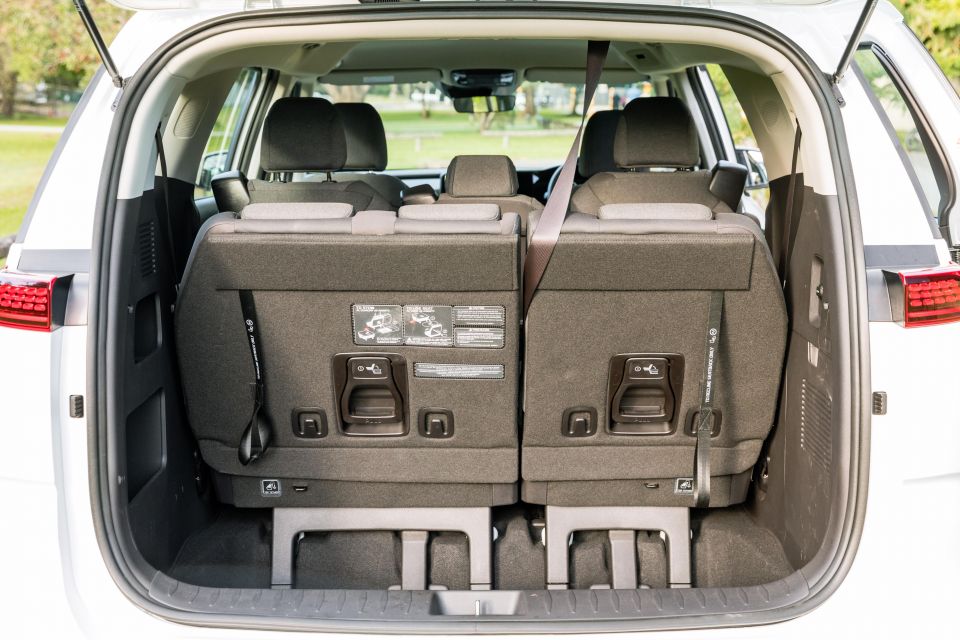
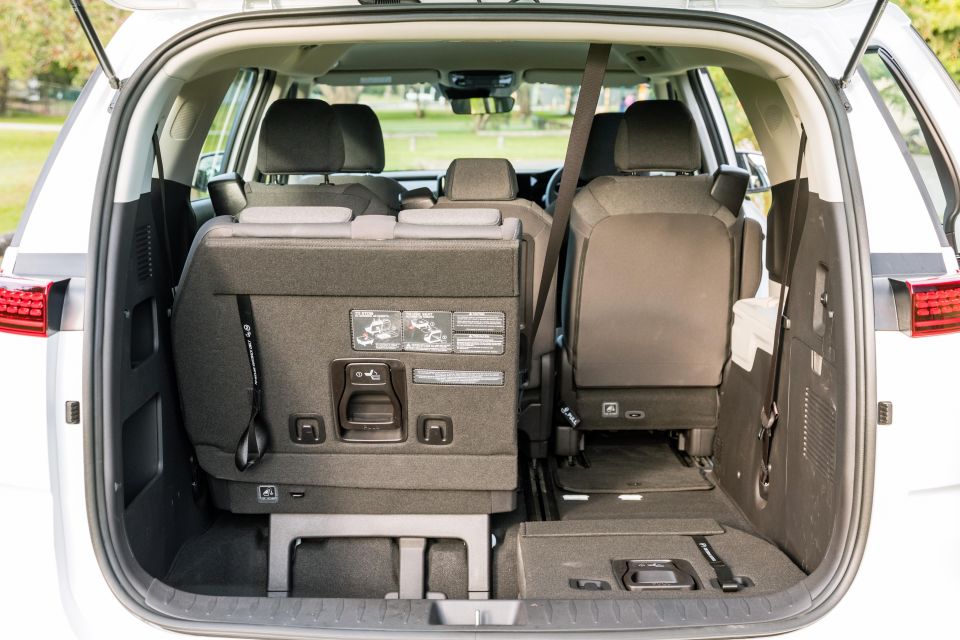
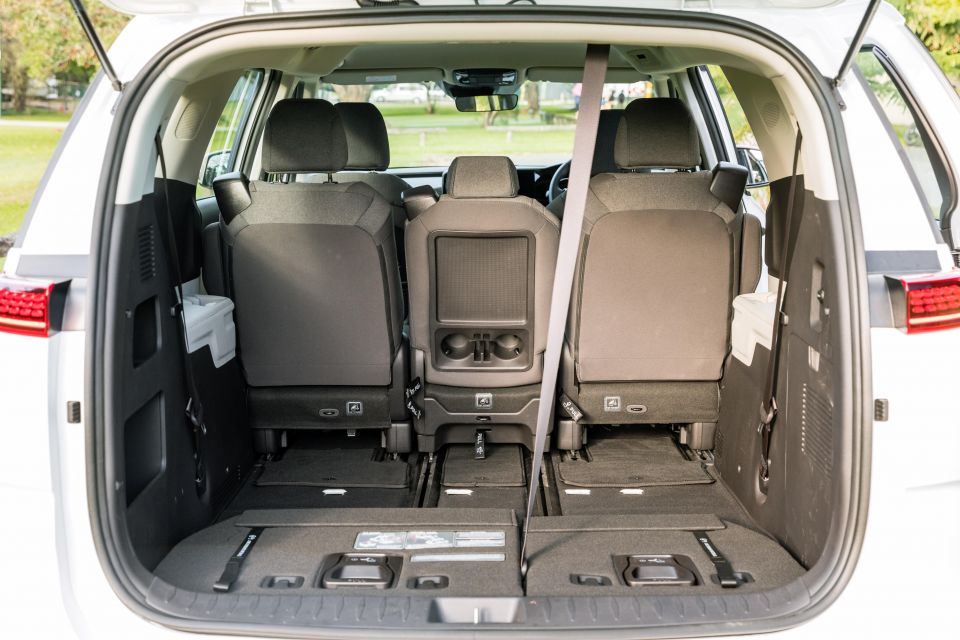
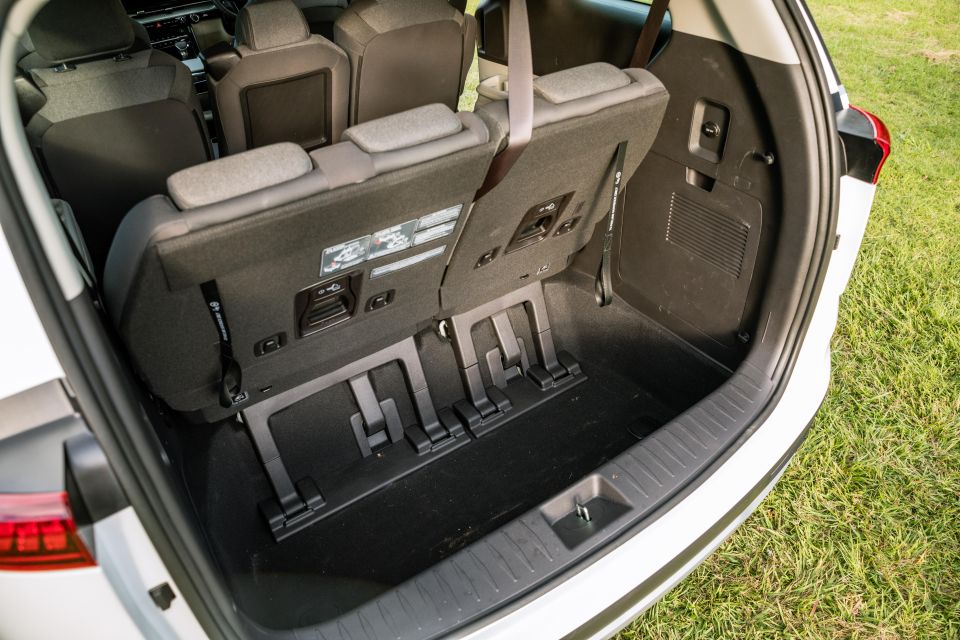
Where expert car reviews meet expert car buying – CarExpert gives you trusted advice, personalised service and real savings on your next new car.
A Palisade or Mazda CX-9 might be able to carry seven passengers but it’ll struggle with their luggage. That’s where the Carnival shines, with a boot that’s a little longer than similarly-sized crossovers and much, much deeper.
Luggage space, following VDA measurements, is 627L with all seats up. That’s just over twice as large as a Palisade’s boot with the third row up. Fold the third row and the Carnival’s luggage space expands to a massive 2785L.
The Passenger Talk function was handy. It uses a microphone near the driver’s seat to transmit what the driver is saying via a speaker located next to the third row, which means you don’t have to raise your voice when trying to communicate with passengers in the far reaches of the cabin.
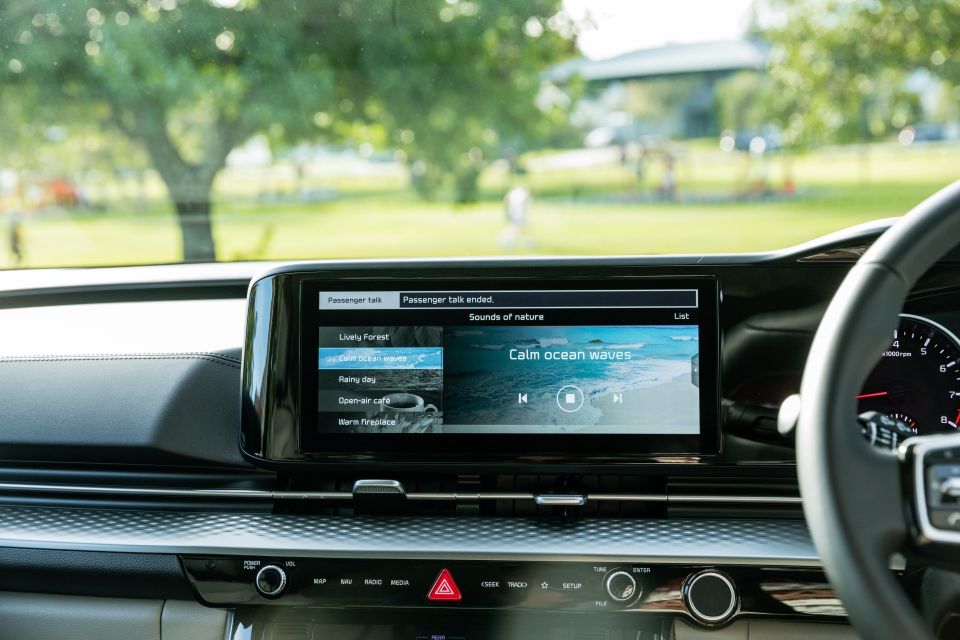
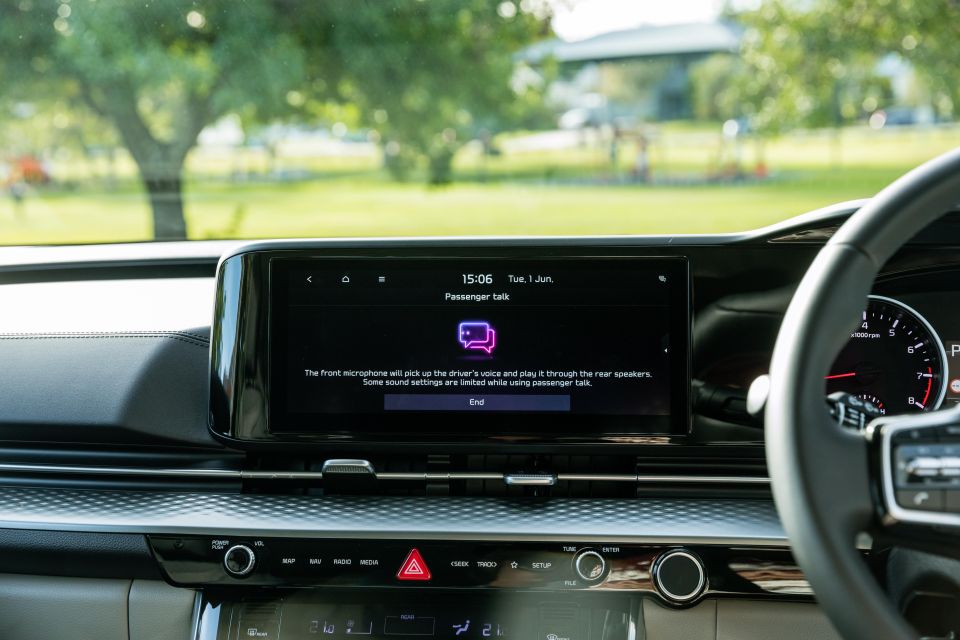
It transcends being a mere party trick, and we could see this being handy when hauling around multiple noisy and/or obstinate children.
There are a couple of other clever features: the now ubiquitous Sounds of Nature, an ambient noise program that continues to be rolled out across new Hyundai Motor Group products, and Quiet Mode.
The latter mutes audio for the second and third rows so as to avoid disturbing passengers who may be sleeping or just dislike your music choices.
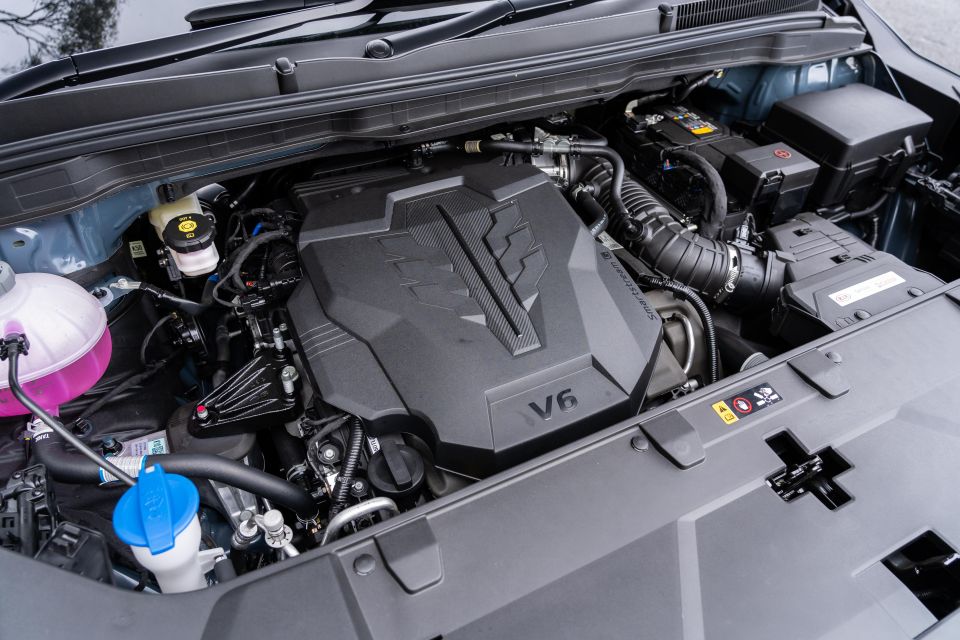
Our tester was equipped with the new, naturally-aspirated 3.5-litre petrol V6 engine. It produces 216kW of power and 355Nm of torque, up 10kW and 19Nm on last year’s 3.3-litre.
It’s also vastly more powerful than the Honda Odyssey, which has a naturally-aspirated four-cylinder petrol engine with just 129kW and 225Nm.
The continued presence of a petrol V6 in the Carnival is largely due to Kia’s marketing of the minivan in North America, where its rivals from Chrysler and Honda use petrol V6 engines. It’s a different story here, with precious few people movers using petrol engines.
Most rivals offer diesels and the Carnival packs one of those too. It’s a 2.2-litre turbo-diesel four-cylinder engine producing 148kW of power and 440Nm of torque.
Both engines are mated to an eight-speed torque-converter automatic transmission. That’s in contrast with the related Sorento, where the diesel uses an eight-speed dual-clutch automatic.
Also unlike the Sorento, all Carnival models are front-wheel drive. Kia has ruled out the option of all-wheel drive for the Carnival.
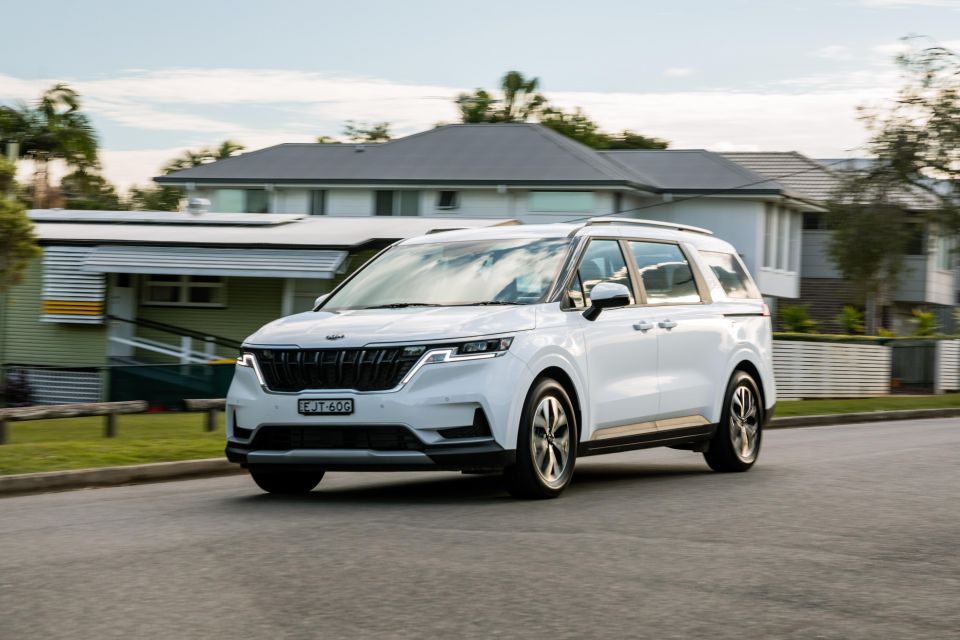
The Carnival has no shortage of performance. You’ll need to be easy with the throttle, lest you light up the front tyres.
That’s what happens when you have 216kW being sent to the front wheels. And trust us, there’s really no reason to ever engage sport mode.
The power is accompanied by an uncharacteristically lusty engine note for a people mover.
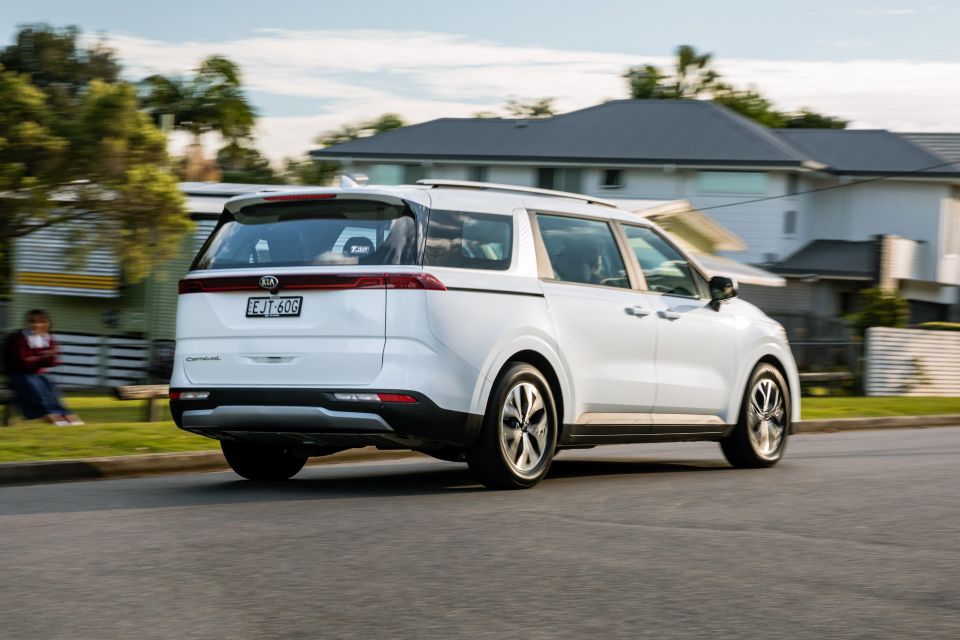
Fortunately, it never sounds coarse, nor is it ever objectionably loud. The eight speed automatic is mostly smooth, though occasionally there’ll be a shift under heavier acceleration that could be smoother.
Ride quality is excellent. The Carnival has a lovely, loping ride quality without feeling too floaty, and body motion is well controlled.
In this respect, there’s been an improvement over the last generation model. Poorly surfaced roads are also dispatched capably with minimal intrusion into the cabin.
That goes for noise, too. The Carnival’s cabin is quiet, even at highway speeds.
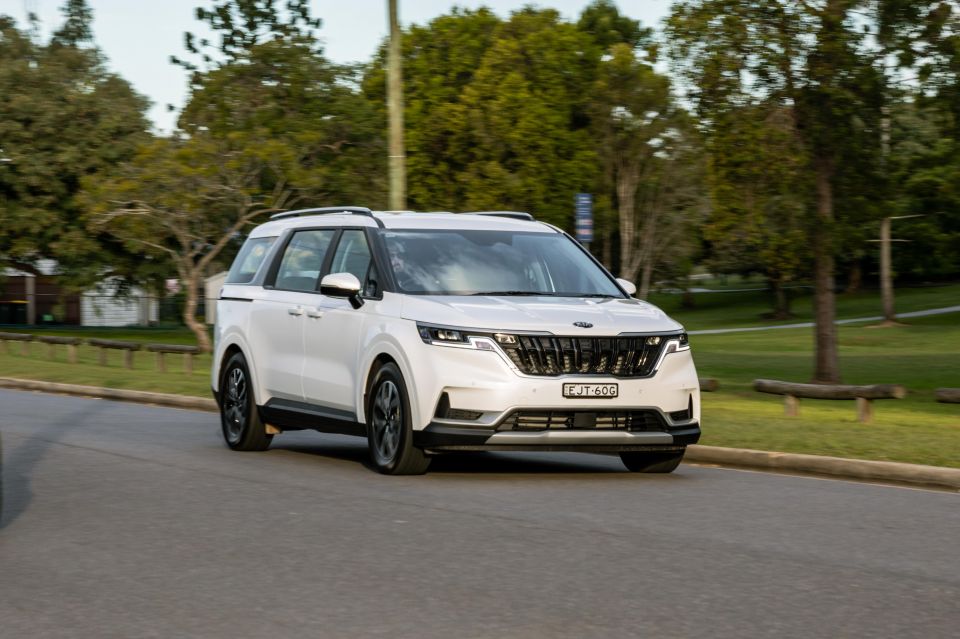
While COVID-19 interfered with development of a local steering tune, the one employed in the Carnival is more than satisfactory. It’s light enough for navigating parking lots and yet it isn’t arcade game-light out on the road.
You’ll never forget just how big this car is in tight quarters, however. Even with a relatively long bonnet for a people mover, it’s a bit awkward to park.
We wish the surround-view camera was standard across the range, though visibility is still strong thanks to the expansive glasshouse.
It doesn’t feel quite as cumbersome out on the road, though this is no sports car. Overall, however, the Carnival strikes an exceptional balance for a vehicle from this segment.
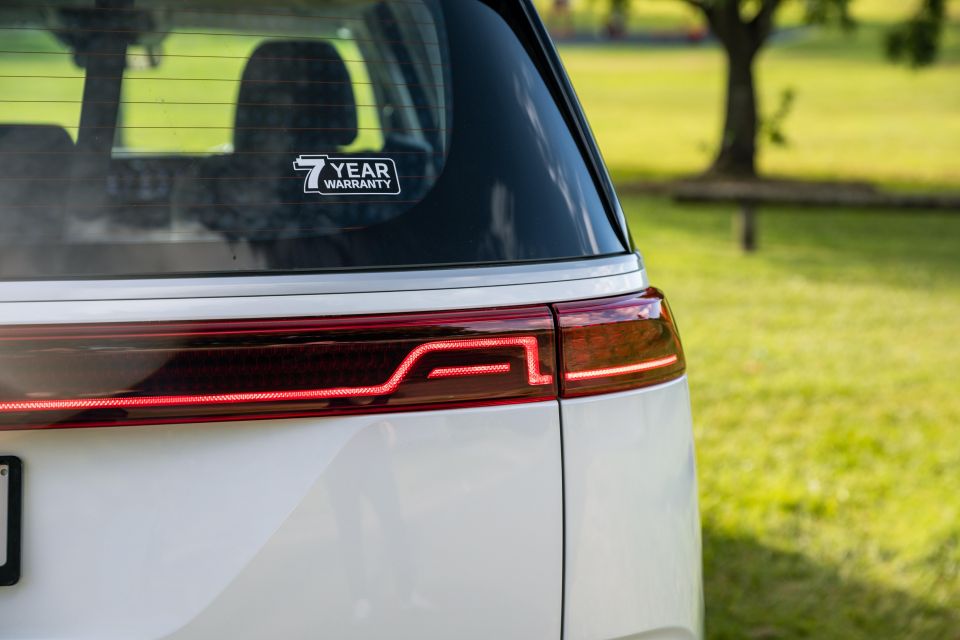
Over a loop consisting of inner-city, suburban and highway driving, we averaged 9.8L/100km. In a Sorento V6 on the same loop, we averaged 10.5L/100km.
Over the course of a week, with a lot of urban driving but a trip from Brisbane to the Sunshine Coast and back, that settled to 9.5L/100km. That’s still better than the Sorento V6 we had, which averaged 12.1L/100km over a week.
The ADR combined cycle figure is 9.6L/100km, which is clearly reflective of real-world driving.
If you opt for the diesel, fuel consumption is slashed to a claimed 6.5L/100km. You also add $2000 to the price tag but, depending on how much driving you do and how much more expensive diesel fuel is in your area, it might just be worth it.
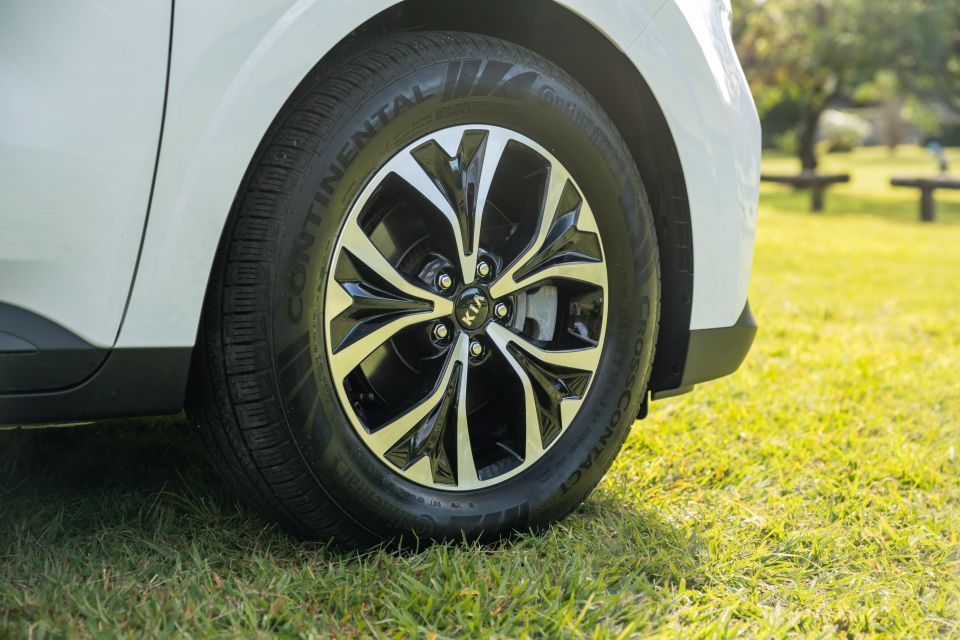
In addition to its seven-year, unlimited-kilometre warranty, Kia also offers seven years of capped-price servicing.
Services are required every 12 months or 15,000km, whichever comes first, and cost $324, $598, $396, $779, $365, $747and $387. That works out to a total of $3596 over seven years.
Honda recently announced it was rolling out a new capped-price servicing plan where the first five services cost just $125, which is astonishingly low in comparison.
Alas, the Odyssey has short six-month/10,000km servicing intervals and, with its Japanese factory closing and no word of a replacement in the works, the Honda may disappear from price lists over the next 12 months.
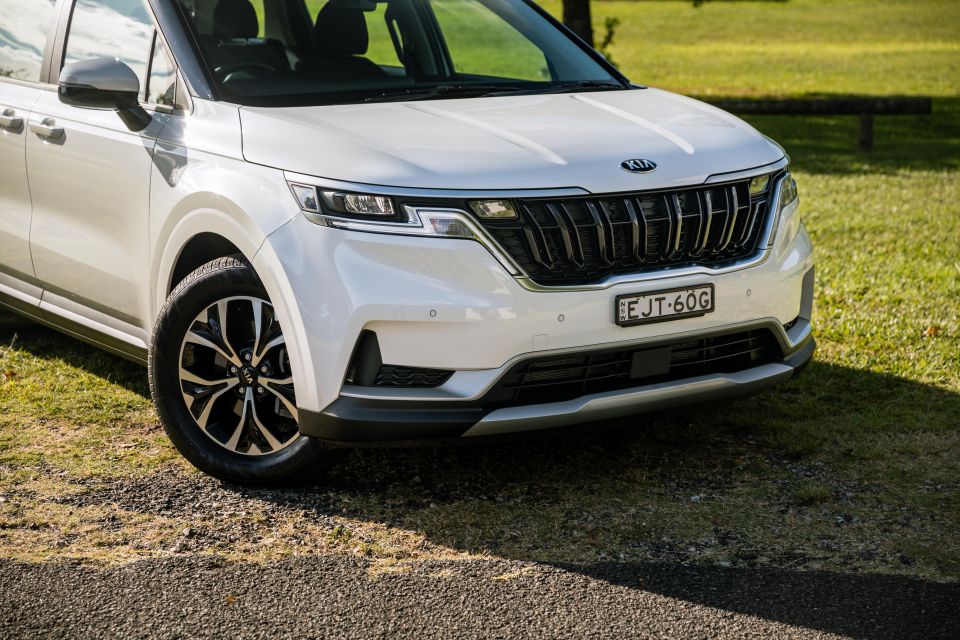
Yes, it’s a people mover. Get over it.
Everyone seems to love getting a rental Carnival when they’re on holiday, yet has serious reservations about buying one.
If you want maximum people-carrying capacity, the Carnival is simply more practical than an SUV with a similar footprint. With all seats up, there’s twice the luggage capacity of a Hyundai Palisade and third-row headroom is vastly superior to that of a Mazda CX-9.

While there’s no available all-wheel drive, the Carnival doesn’t feel much bulkier behind the wheel than a similarly-sized, front-wheel drive crossover. The V6 engine is punchy, while a more frugal turbo-diesel is an acceptable $2000 extra.
There’s simply no beating the level of interior space and comfort and safety equipment the Carnival offers. A Honda Odyssey may pack more standard convenience and luxury features at this price point but its four-cylinder engine is left in the dust by the Carnival’s V6.
The Carnival also looks less van-like than an Odyssey, and that’s the key hurdle the Kia must overcome with buyers. Those who already own people movers know just how versatile they are, and now it’s up to Kia to convince buyers the Carnival is hip enough to consider over a similarly-sized SUV.
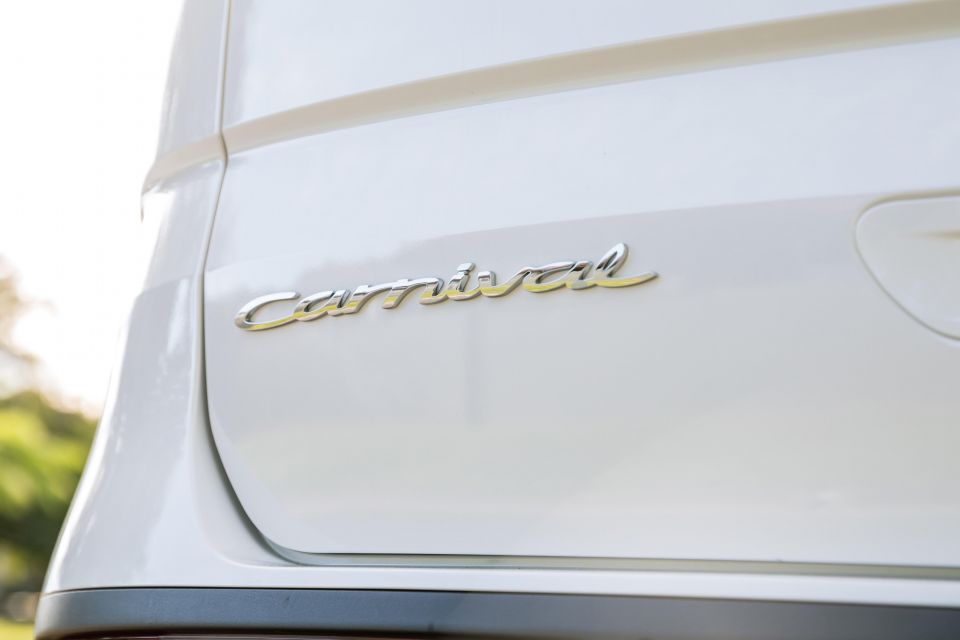
Click the images for the full gallery
MORE: Everything Kia Carnival
Where expert car reviews meet expert car buying – CarExpert gives you trusted advice, personalised service and real savings on your next new car.
William Stopford is an automotive journalist based in Brisbane, Australia. William is a Business/Journalism graduate from the Queensland University of Technology who loves to travel, briefly lived in the US, and has a particular interest in the American car industry.


Max Davies
5 Days Ago


Josh Nevett
4 Days Ago


Andrew Maclean
3 Days Ago


Shane O'Donoghue
3 Days Ago


Anthony Crawford
2 Days Ago
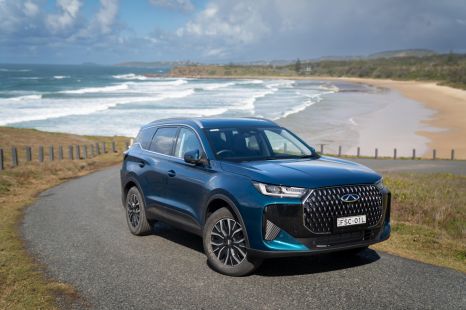

Andrew Maclean
1 Day Ago